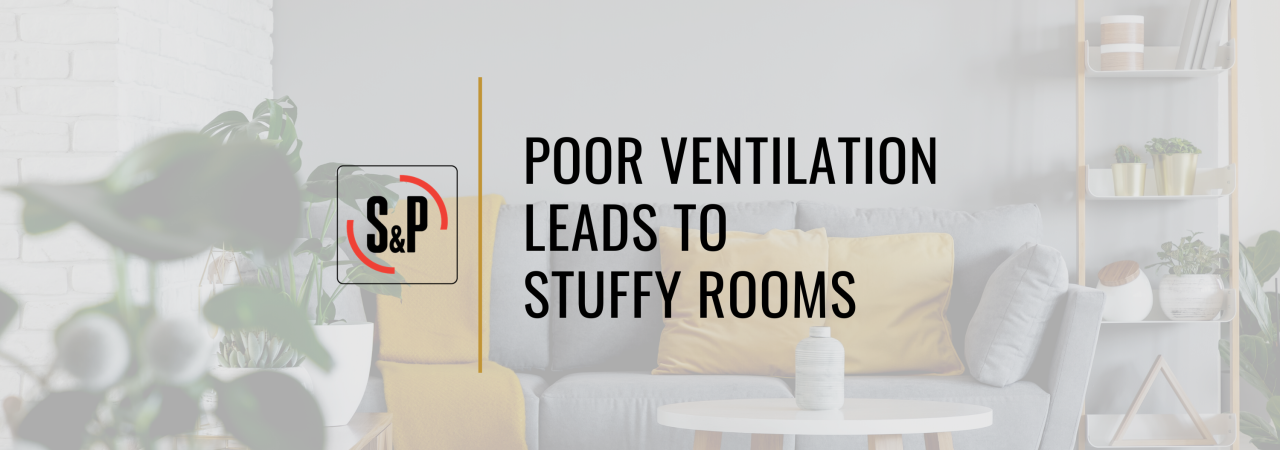As the temperature increases, it’s time to think about how you’re going to keep your home comfortable and healthy throughout the humid, sticky months ahead. Keeping your home cool is more than just keeping your HVAC unit in check; it is also being aware of how much fresh air can be brought in through other methods. Most modern homes are built as tight as possible to ensure high efficiency; thus making proper ventilation a necessity. Learn more about how poor air flow negatively impacts indoor air quality (IAQ) and solutions to making your home comfortable and healthy.
Poor Ventilation Leads to Stuffy Rooms
Stuffy or stagnant air is a chief complaint among homeowners. High humidity, built up simply by doing everyday things such as showering, cooking and even breathing, is a major contributor to poor IAQ. When the air temperature increases, it holds more humidity until it becomes too saturated to hold it within vapor form, causing the stuffy feeling you experience. Carbon Dioxide (CO2) contributes as well.
Three Ways to Improve Indoor Air Quality
Bring Fresh Air in
Homes are being built more efficient and tight that they can quickly trap harmful contaminants (fine dust-PM2.5, humidity, VOC’s and more). We don’t want this building up and affecting our health. To eliminate it, we can reduce the indoor stale air with fresh clean outside air by running an exhaust or supply fan continuously at a low speed. This provides a constant flow of fresh outside air, flushing the home out and diluting the indoor stale air.
Lower Humidity, Healthier Home
Certain areas of our homes produce more humidity than others, for example the kitchen and bathroom. Removing the humidity at the source reduces that icky feeling and more importantly the chance of mold growth. Exhaust fans found in bathrooms and kitchens can draw away stuffy air and improve air flow throughout the home.
Filtration for your Family
Diluting the stale indoor air with fresh outside air and removing contaminated air at the source are great first steps, but what about the rest of the air that is recirculated in the home? It needs to be filtered. Higher efficiency filters trap more pollutants (fine dust (PM2.5), dander, allergens, etc). MERV stands for “Minimum Efficiency Reporting Value” and is the most common way filters are rated. The higher the MERV number, the better the filter is at trapping the bad stuff.
For more information on how to help bring fresh air indoors and promote proper ventilation, view S&P’s wide array of product line on our product page.

